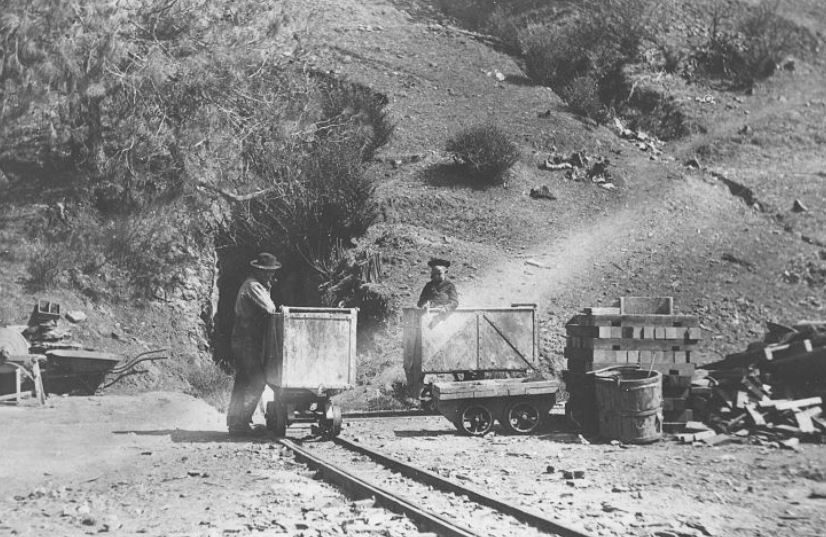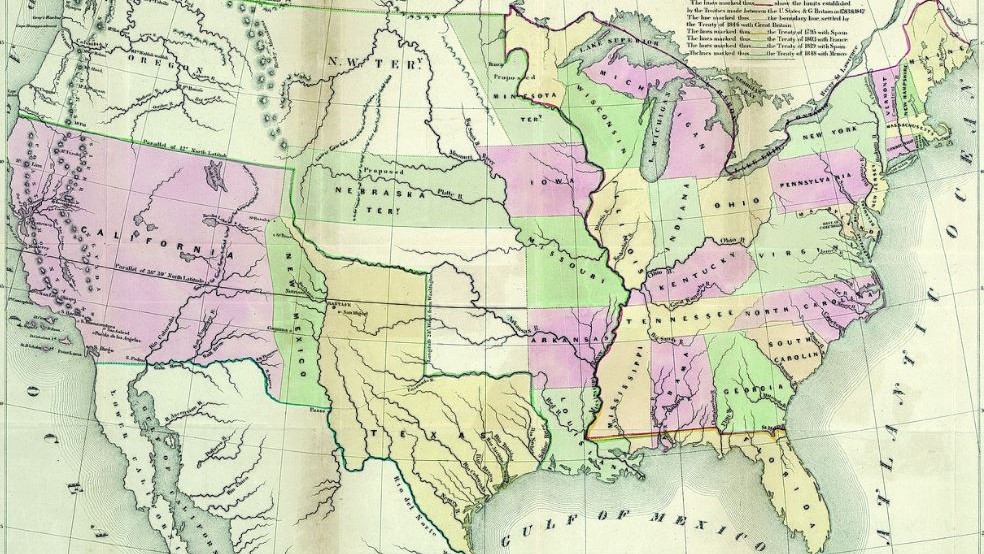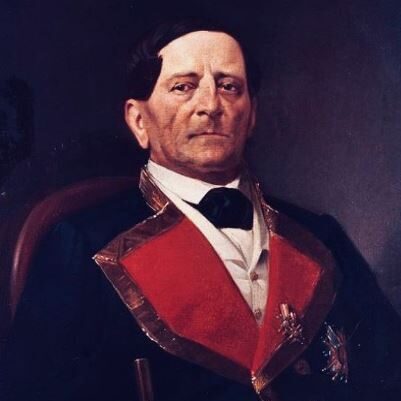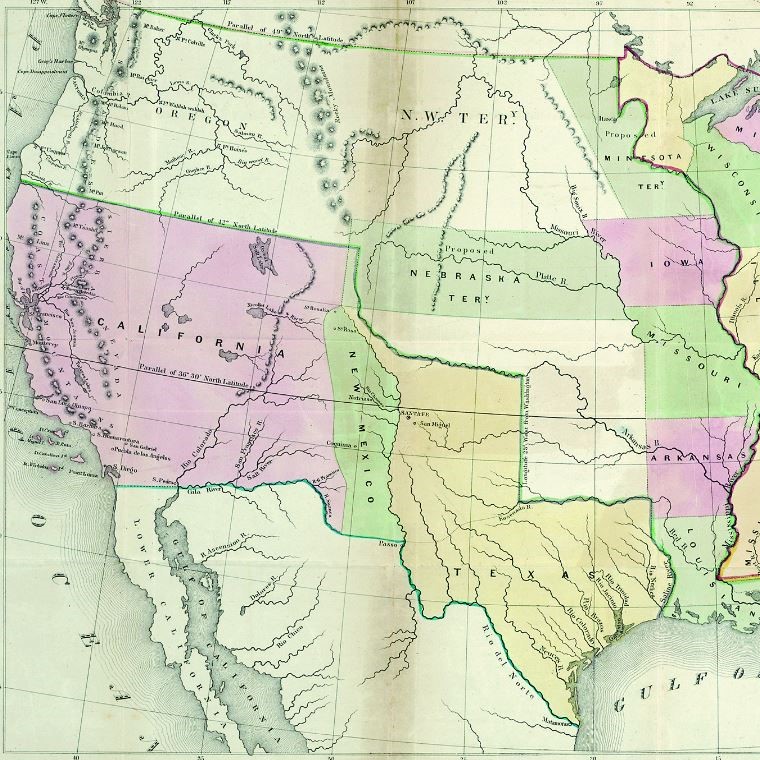The Mexican-American War culminated in 1848 with the United States achieving total military victory over Mexico. After winning a string of battles, American forces marched into Mexico City, the Mexican capital itself.
While the U.S. had conquered large swaths of its southern neighbor, it did not attempt to absorb the entirety of Mexico into the Union.
Why didn’t the victorious Americans simply take over all of Mexico after their decisive triumph on the battlefield?
The U.S. had the military might and was riding a wave of continental expansionism known as “Manifest Destiny.” Yet only around half of Mexico’s territory was ultimately annexed despite total victory.
Read on to find out what factors and motivations constrained the U.S. from making Mexico entirely American.
1. The Allure of Manifest Destiny
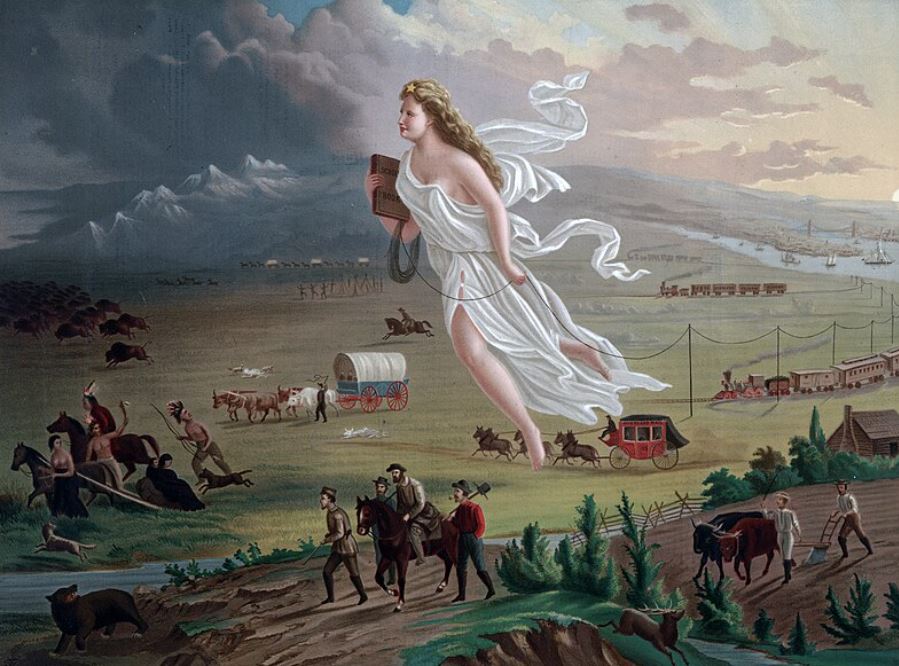
The concept of Manifest Destiny originated in the 1840s as a call for vigorous American territorial expansion across the entire North American continent.
Journalists popularized the phrase. It tapped into long-standing beliefs about the unique virtues of American democratic republicanism and racial anglo-saxonism.
Manifest Destiny provided was a powerful ideology to justify continental American empire-building. This belief sought to displace, and inherit the territorial possessions of the “decadent” Spanish-Mexican Catholic civilizations.
Forcibly taking all of Mexico could easily be rationalized as simply a fulfillment of America’s continental supremacy.
Ingrained Racism and Nativism
Rather than mere territorial appetite, Manifest Destiny reflected ingrained racism and nativism.
Its premise viewed the “superior” American Anglo-Saxon race. They believed they were inherently more fit to acquire and possess the lands from the “inferior” Native Americans, Mexicans, and other non-whites.
This potent ethnic chauvinism fused Anglo-Protestant nationalism with western frontier conquest.
Impetus for War with Mexico
The Manifest Destiny expectations of pushing to the Pacific Ocean fueled popular demands for military action against Mexico.
The calls for “annexing” Texas by incorporating it into the United States directly caused the 1846 conflict with Mexico.
What began as a border dispute would go on to strip Mexico of its northern territories.
Expansionist Pressures
There was immense political pressure from expansionist settlers, businessmen, and politicians to seize Mexican territories like California and New Mexico.
Mexico was considered vulnerable. Many viewed it as ripe fruit to slice more lands away in realizing Manifest Destiny’s ambitions. The war’s quick successes on the battlefield only emboldened these continental visions of a Mexican dispossession.
2. Internal Divisions Over Slavery
The dreams of Manifest Destiny pulled the nation westward. But the issue of slavery had already cleaved the United States into hostile regional camps.
The North had gradually abolished slavery and industrialized into a free labor economy. But in the South, slavery remained deeply entrenched as the backbone of its agrarian plantation system.
The expansion westwards would become a key component of the slavery debate in the United States.
The Missouri Compromise
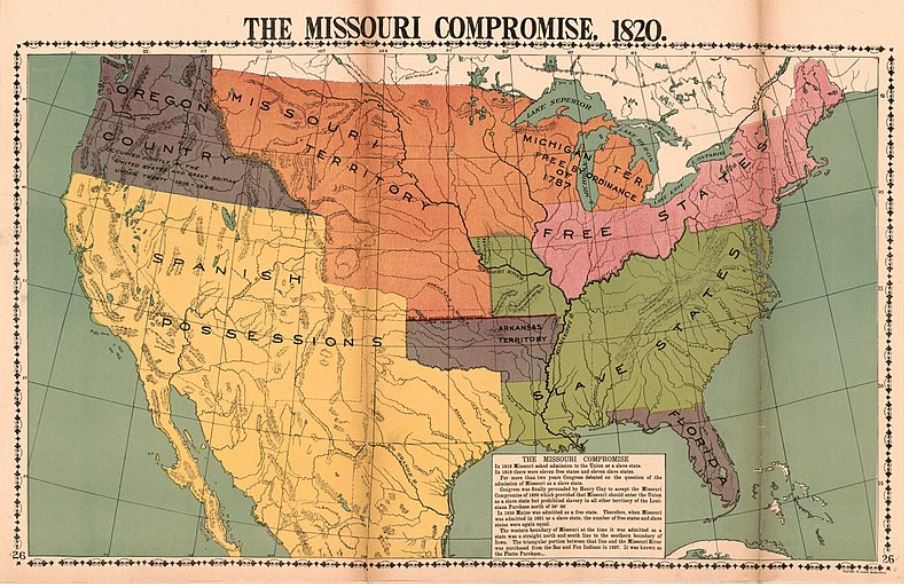
This sectional divide over slavery burst into the open in 1819 during debates over admitting the Missouri Territory as a state.
The Missouri Compromise attempted to defuse the crisis. This agreement designated it as a slave state. But banned slavery in the remaining Louisiana Purchase lands north of Missouri’s southern border.
For the next few decades, this Missouri Compromise helped preserve a tenuous balance between slave and free states in Congress.
However, as new territories were acquired and applied for statehood, the struggle over whether they would be open to slavery or not intensified.
The Wilmot Proviso
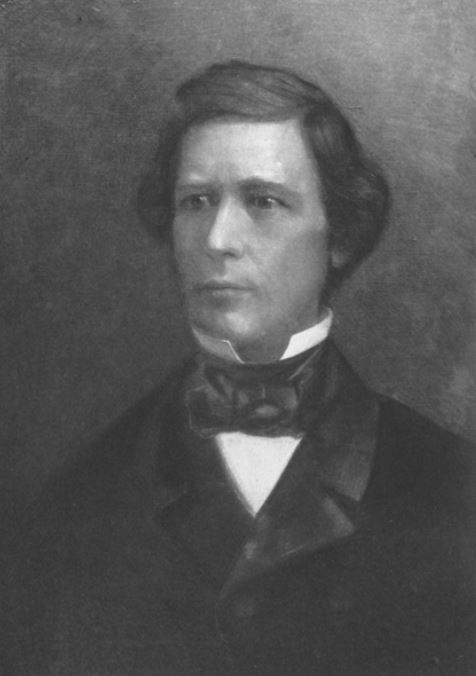
When the Mexican-American War broke out in 1846, Northern lawmakers tried to ban slavery’s expansion into any territories conquered from Mexico through the Wilmot Proviso.
This proposal was introduced by Democratic Congressman David Wilmot of Pennsylvania. It aimed to prohibit the introduction of slavery in the potential territorial acquisitions from Mexico.
The Wilmot Proviso ignited the tensions between the North and the South.
Southerners vehemently opposed the Proviso. They demanded room for the expansion of slavery, which they referred to as their “peculiar institution.”
These tensions over the issue of slavery’s expansion into newly acquired territories further intensified the growing tensions between the free and slave states. This fueled the ongoing debate over the future of slavery in the United States and laying the groundwork for the impending crisis that would ultimately lead to the Civil War.
Adding Mexico’s Territories
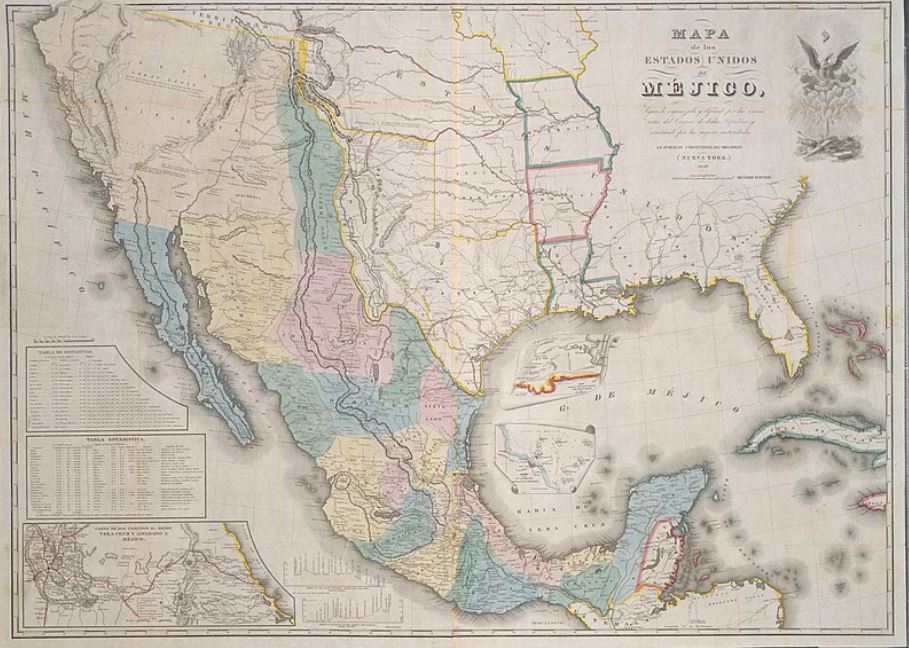
Had the U.S. attempted to annex all of Mexico after its military victory, it would have massively disrupted the delicate political balance over slavery’s future.
If the United States had annexed the entirety of Mexico, it would have fundamentally altered the dynamics surrounding the contentious issue of slavery.
The potential inclusion of millions of new citizens and vast territories from Mexico could have drastically shifted the balance of power. It threatened to diminish the influence of the slave states.
The slave states feared that their populations and political clout would be overshadowed.
The addition of such a substantial non-slaveholding population could have tipped the scales. Northerners saw this as an opportunity to weaken the grip of the slave states. They hoped it would eventually lead to the nationwide abolition of slavery.
The potential annexation of Mexico raised high stakes for both sides of the slavery debate.
Descent Towards Civil War
These burning tensions over slavery’s expansion set the stage for the Civil War just over a decade later in 1861.
3. Logistical Challenges of Occupation
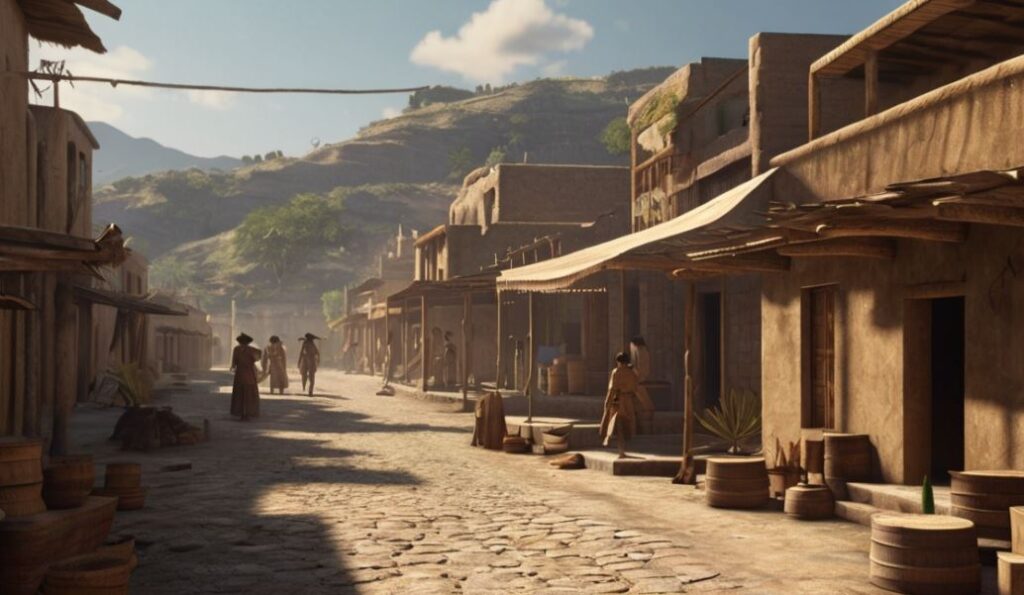
Even after its military victories, attempting to occupy and govern all of Mexico would have represented an overwhelming challenge for the United States.
Mexico’s territory made it one of the largest nations in the Western Hemisphere.
Mexico’s population of around 8 million in the 1840s was spread out across the country in dispersed cities, towns, and rural areas.
Many resided in mountainous or remote regions far from the capital.
From a pure logistics perspective, the challenges of supplying and sustaining a large American occupation force spread across Mexico’s rugged landscape would have been immense.
Hostile Local Populations
Maintaining order and allegiance among a population of this size across the territory would have required an immense military presence.
The Mexican population had little desire to live under American rule. Particularly after a brutal war of conquest against their nation.
Significant armed resistance and rebellion would be expected. This would require constant subjugation by U.S. forces. Attempting to indefinitely occupy the territory against the will of the inhabitants carried major risks.
Inadequate Occupying Forces
At the peak of the Mexican-American War, the U.S. forces in the field numbered only around 30,000 men – mostly short-term volunteers and militia.
Maintaining control over Mexico would have required a vastly larger, professionalized force. The fiscal costs of this would have been exceptionally high, perhaps unacceptably so. The war’s costs already strained the U.S. Treasury. A full annexation carried grave economic risks.
4. Moral Constraints on Expansion
While Manifest Destiny preached America’s continental destiny, it did not necessarily endorse conquering inhabited lands against the will of the people.
This would violate the core republican ideals of self-governance and consent of the governed that the American revolution was founded upon.
Avoiding European Imperialism
Many saw annexing all of Mexico as mirroring the very European imperialism and colonial subjugation that America had rebelled against with Britain.
Imposing American rule over millions of unwilling Mexicans could make the U.S. appear no different than the European monarchies it once criticized.
Racial Debates
There were also concerns that absorbing Mexico would dilute the Anglo-Saxon Protestant foundation that the United States had been built upon.
Incorporating millions of Mexican Catholics could fundamentally alter the demographics and identity of the nation.
The moral inconsistency of conquering Mexico while professing racial equality and inalienable rights caused unease. If American principles rejected racial subjugation, how could it justify militarily forcing itself over another ethnic population?
Notable figures like former presidents John Quincy Adams and Martin Van Buren forcefully argued against such “unholy” territorial conquest as a violation of America’s core values. The concept of a multi-ethnic “racial empire” built on forced annexation faced fierce criticism.
There were also fears that starting down the path of conquest and subjugation could lead to a slippery slope, transforming the U.S. from a restrained republic into a rapacious racial empire focused on perpetual expansion that departed from its Anglo-Saxon Protestant roots.
5. Final Thoughts on Annexation of Mexico
Ultimately, despite being inflamed by grandiose visions of Manifest Destiny expansionism in the aftermath of military victory, more pragmatic and restrained minds prevailed in deciding against any attempt to conquer and absorb all of Mexico.
The domestic sectional crisis over slavery’s future, coupled with the immense pragmatic obstacles of occupation and moral constraints, led to a much more limited territorial acquisition in the Treaty of Guadalupe Hidalgo of 1848.
This momentous outcome avoided throwing fresh kindling onto the already smoldering internal crisis over slavery’s expansion.
However, the vast Mexican Cession did still add an enormous stretch of the Southwest and California that finally extended America’s dominion “from sea to shining sea.”
Further Reading
If you enjoyed this article, you may be interested to read more about the American Civil War events, or perhaps read about the Mexican-American War.


